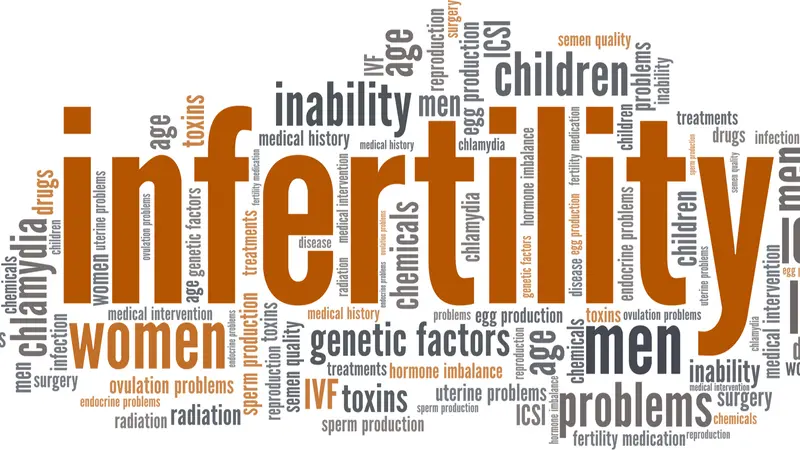

Chronic Conditions and Diseases

Chronic Conditions and Diseases
Are Environmental Toxins Tipping the Scale Toward Human Extinction?
Birth rates in the United States and other industrialized nations have dramatically fallen, and environmental toxins may be at play as an underlying cause.
Birth rates in the US dropped in 2020 to an all-time low, according to data from the National Center for Health Statistics. While COVID-19 contributed to the decline from 2019, it is the sixth straight year of decline in the US birth rate, which is down 19% since 2007.
Declining birth rates are not unique to the US. Industrialized nations across the globe have declining birth rates that are so low that their populations cannot be sustained. A country needs a birth rate of 2.1 (the average number of children a woman would have in her lifetime) to naturally replace its population. Southern Europe, Eastern Europe, and Eastern Asia have the lowest fertility rates in the world, with an average of 1.5. The US birth rate is now 1.6, with China at 1.3, Japan at 1.3, Russia at 1.6, Bangladesh at 1.7, Brazil at 1.8, Indonesia at 2.0, and India at 2.1. Although there are countries with large populations and high birth rates, their numbers are much lower than they were in 1960 (e.g., Pakistan declined from 6.6 to 3.4 and Nigeria declined from 6.4 to 5.1 over that period, and each declined every year).
To put the decline in birth rate into perspective, consider the potential effect in China. The Chinese population may begin declining as early as 2030 with a loss of 600 to 700 million people from its population by 2100—which is about half of its population!
Birth rates in the US dropped in 2020 to an all-time low, according to data from the National Center for Health Statistics.
Socioeconomic and Cultural Factors
Declining birth rates have been ascribed to socioeconomic and cultural factors. These factors include postponement of marriage and childbearing to older ages and long-term increases in women’s educational attainment and labor force participation. In China, birth rates were impacted by the 1979 “one-child policy” that was ended in 2016 (China is now encouraging couples to have three children).
Fertility Factors
While the impact of socioeconomic and cultural factors on population changes have received widespread attention for years, male and female infertility have largely been overlooked—and have potentially far more serious impacts.
Infertility is defined as the inability to get pregnant after trying for one year. Infertility is significant and on the rise. According to a 2021 article published in Scientific American, the world-wide fertility rate has dropped by almost 1% per year from 1960 to 2018, with significant infertility issues affecting both men and women.
Infertility affects:
- 48.5 million couples worldwide
- 1 in 4 couples in developing countries
- 19% of American women (aged 15 to 49 with no prior births), with 1 in 4 of those women experiencing impaired fecundity (physical difficulty in either getting pregnant or carrying a pregnancy to live birth)
- 9% of American men (aged 15 to 44)
In the US and other Western countries, male fertility issues are increasing about 1% per year. In an analysis of 185 studies involving nearly 43,000 men published in the Human Reproduction Update, researchers found more than a 52% decline in sperm concentration and nearly a 60% decline in total sperm count between 1973 and 2011 among men unaware of their fertility. At this rate, average sperm count could be zero by the middle of this century—a sobering thought.
While many studies have documented a natural reduction in male testosterone levels associated with age, a recent study indicated non-age-related decreases in testosterone levels of almost 1% per year in excess of age-related trends during recent decades. Another study found declining total testosterone levels among adolescent and young adult males from 1999 to 2016. While higher body mass indices (BMI) have been suggested as a cause of lower total testosterone, researchers found the decline trend in adolescent and young men was still significant even with a normal BMI. One study suggested that environmental endocrine disruptors could be a potential contributor; additional studies on male testosterone levels and the cause of its decline are needed.
At this rate, average sperm count could be zero by the middle of this century—a sobering thought.
Additionally, men are experiencing increasing rates of testicular cancer and erectile dysfunction. Testicular cancer rates have been increasing for decades and the American Cancer Society reports that it is the most common form of cancer among men 20 to 40 years old and second most common in men 15 to 19 years old. Likewise, the prevalence of erectile dysfunction is increasing worldwide, in part because of an aging global population, but it also is increasing among younger men.
For women, there was a 1% per year increase in reported miscarriage rates in the US over a two-decade period. The increase in infertility among women has manifested itself in the increased use of assisted reproductive technologies, including in vitro fertilization (IVF) among younger women, not just those that waited to start families until after age 35. There also has been an increasing trend in the use of gestational surrogacy.
So, what has changed?
The jury is still out, and more research is needed as to why human fertility rates have been dropping steadily and significantly since 1960. However, researchers are starting to connect human exposure to chemicals in the environment as the potential cause.
KnoWEwell’s insights article, Understanding Toxins in Our Environment, highlighted that the United States Environmental Protection Agency’s (EPA) Chemical Substances Control Inventory lists more than 86,000 chemicals considered to be toxic, and this list excludes potentially harmful chemicals regulated by other agencies such as additives, cosmetics, drugs, pesticides, and tobacco. The potential health outcomes from some of those chemicals affect fertility, including endocrine disruption, reproductive disorders, and cancers. As noted in KnoWEwell’s insights article, Environmental Medicine and Detoxification, “Individuals are a product of all of the exposures of the environments in which they have lived, and such accumulation impacts their body’s physiological systems’ ability adapt and stay healthy,” and reproduce.
[R]esearchers are starting to connect human exposure to chemicals in the environment as the potential cause.
In addition to cancers that directly affect the reproductive organs, such as testicular cancer, chemicals that interfere with or mimic sex hormones—testosterone and estrogen—are of particular concern. Two of these chemicals are found nearly everywhere. Much of the damage from chemical exposures occurs in utero on fetuses and then continues as the individual matures and later tries to reproduce as an adult.
Phthalates are chemicals found in nearly everything in today’s world. They make plastics soft and flexible and are in food and personal care products such as shampoos, cosmetics, lotions, and soaps, and in other products from water bottles to shower curtains and toys to medical products. Phthalates are considered endocrine-disrupting chemicals and are suspected to interfere with the production, activation, and excretion of human hormones, especially in the reproductive system. Specifically, studies have linked phthalates to shortened anogenital distance (AGD) in men, which results in smaller penises and lower sperm count, lower testosterone, reduced sperm quality, and increased DNA damage. Studies also have related phthalates to estrogenic effects including increased premature births, increased sex hormone binding globin, reduced egg quality, longer AGD in women, which is associated with less reproductive success, and increased gynecological diseases (endometriosis and leiomyoma) that can affect fertility.
Bisphenol A (BPA) is a chemical used to harden plastic and it is found in the lining of some canned-food containers. BPA mimics estrogen and tricks a woman’s body into believing it has enough already. Human and animal studies have linked BPA to female infertility, negative outcomes from assisted reproductive technologies (like IVF), disruption of the major female reproductive system, and the onset of endometriosis and polycystic ovary syndrome (PCOS), a condition that affects how the ovaries work.
Unfortunately, it is impossible to totally eliminate chemicals and plastics, but by making informed and conscious consumer choices, individuals can reduce the potential harmful effects on their reproductive health and the future reproductive health of their children.
How to Protect Your Own Fertility
People of reproductive age, particularly who are pregnant or those planning pregnancy, should be aware that their personal environment, everything they consume, and the packaging it comes in may contain chemicals that may be harmful. Unfortunately, it is impossible to totally eliminate chemicals and plastics, but by making informed and conscious consumer choices, individuals can reduce the potential harmful effects on their reproductive health and the future reproductive health of their children.
To protect reproductive health:
- Detoxify to the extent possible.
- Consume only unprocessed, fresh, and organic foods (when available).
- Avoid processed, canned and prepackaged food.
- Do not store foods in plastic.
- Stop using TeflonTM or coated cooking pots and pans.
- Never microwave food in plastic containers.
- Say “no” to retail receipts on thermal paper, which may be coated with BPA.
- Avoid plastics marked with a “PC,” for polycarbonate, or recycling label #7.
- Eat fewer animal products to decrease exposure to dioxin.
- Get a drinking water filter certified to remove atrazine, an herbicide used on corn.
- Avoid plastic food containers, children’s toys, and plastic wrap made from PVC, which has the recycling label #3.
- Avoid personal care products that list added “fragrance,” as this may indicate the presence of phthalates.
- Only use phthalate-free personal care products.
REFERENCES
American Cancer Society. (2022, January 12). Key statistics for testicular cancer. https://www.cancer.org/cancer/testicular-cancer/about/key-statistics.html
Ayta A., McKinlay, J., Krane R. (1999, July). The likely worldwide increase in erectile dysfunction between 1995 and 2025 and some possible policy consequences. National Institutes of Health. National Library of Medicine. National Center for Biotechnology Information. https://pubmed.ncbi.nlm.nih.gov/10444124/
Bricker, D. (2021, June 15). Bye, bye, baby? Birthrates are declining globally – here's why it matters. World Economic Forum. https://www.weforum.org/agenda/2021/06/birthrates-declining-globally-why-matters/
Environmental Working Group. (2013, October 28). Dirty dozen endocrine disruptors: 12 hormone-altering chemicals and how to avoid them. https://www.ewg.org/consumer-guides/dirty-dozen-endocrine-disruptors
Huang, P., et al. (2012, December). Phthalates exposure and endocrinal effects: an epidemiological review. Journal of Food and Drug Analysis. https://www.researchgate.net/publication/280919371_Phthalates_Exposure_and_Endocrinal_Effects_An_Epidemiological_Review
Levine, H., et. al. (2017, July 25). Temporal trends in sperm count: a systematic review and meta-regression analysis. Human Reproduction Update. https://academic.oup.com/humupd/article/23/6/646/4035689?login=true
Lokeshwar, S., et. al. (2021, July). Decline in serum testosterone levels among adolescent and young adult men in the USA. National Institutes of Health. National Library of Medicine. National Center for Biotechnology Information. https://pubmed.ncbi.nlm.nih.gov/32081788/
Martin, J., Hamilton, B., Osterman, M. (2021, September). Births in the United States, 2020. National Center for Health Statistics. Centers for Disease Control and Prevention. https://www.cdc.gov/nchs/products/databriefs/db418.htm
Park, J., et. al. (2018, September). Recent global trends in testicular cancer incidence and mortality. National Institutes of Health. National Library of Medicine. National Center for Biotechnology Information. https://www.ncbi.nlm.nih.gov/pmc/articles/PMC6155960/
Perkins, K., et. al. (2016, August). Trends and outcomes of gestational surrogacy in the United States. National Institutes of Health. National Library of Medicine. National Center for Biotechnology Information. https://pubmed.ncbi.nlm.nih.gov/27087401/
Pivonello, C., et. al. (2020, March 14). Bisphenol A: an emerging threat to female fertility. Reproductive Biology and Endocrinology. https://rbej.biomedcentral.com/articles/10.1186/s12958-019-0558-8
Population Reference Bureau. (2021, May 6). Why is the U.S. birth rate declining? https://www.prb.org/resources/why-is-the-u-s-birth-rate-declining/
Rastrelli, G., Maggi, M. (2017, February). Erectile dysfunction in fit and healthy young men: psychological or pathological? National Institutes of Health. National Library of Medicine. National Center for Biotechnology Information. https://www.ncbi.nlm.nih.gov/pmc/articles/PMC5313296/
Rossen, L., Ahrens, K., Branum, A. (2018, January). Trends in risk of pregnancy loss among US women, 1990-2011. National Institutes of Health. National Library of Medicine. National Center for Biotechnology Information. https://pubmed.ncbi.nlm.nih.gov/29053188/
Sears, M., Genuis, S. (2012, January). Environmental determinants of chronic disease and medical approaches: recognition, avoidance, supportive therapy, and detoxification. Journal of Environmental and Public Health. https://www.researchgate.net/publication/221815764
Society for Assisted Reproductive Technology. (n.d.). Number of cycles, deliveries and babies. https://www.sart.org/globalassets/__sart/infographics/number-of-cycles-deliveries-babies.png
Swan, S., Colino, S. (2021, March 16). Reproductive problems in both men and women are rising at an alarming rate: a likely culprit is hormone-disrupting chemicals. Scientific American. https://www.scientificamerican.com/article/reproductive-problems-in-both-men-and-women-are-rising-at-an-alarming-rate/
Travison, T., et. al. (2009, June). Temporal trends in testosterone levels and treatment in older men. National Institutes of Health, National Library of Medicine, National Center for Biotechnology Information. https://pubmed.ncbi.nlm.nih.gov/19396984/


 By
By







